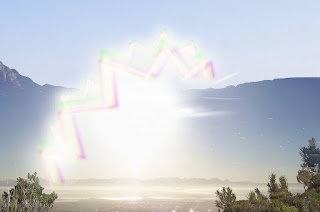King Tut's tomb: conservation or replication (but don't forget the "aura")?
The article brings the example of King Tut’s burial chamber in Luxor in Valley of Kings in southern Egypt. The living-room size room has become a tourist icon, with millions of visitors crowding into the hot and humid chamber to view the remarkably preserved walls, marred only by brown splotches that resulted from the apparent sealing of the crypt before the paint had dried, allowing bacteria to feast on the moisture and the plaster to expand and contract. Against that background, It was determined by the Getty Conservation Institute that there was a danger that some of the painted areas had become extremely loosened.The solution, in classic art conservation style, was to clean the relevant portions of the wall and apply an adhesive, and thereby attempt to prevent flaking of the paint. As Zalewski observes, because there is a physical intervention in the object of art, “reversibility” is the guiding principle; here, the view is that the test of reversibility was met. That said, conservation is inherently a risky task and even the best conservation can never be guaranteed to be reversible, inter alia, because the adhesive used may lead to what is called “chromatic variations” in the pigment surface, or getting rid of the adhesive might may lead to dislodging the paint.
However, it turns out that there is also a replica of King Tut’s tomb, located about a mile away from the tomb itself. The facsimile replica was the result of a seven-week digital scan of the tomb, followed by two years of work at the Factum Arte warehouse in Madrid. As Zalewski describes it--
“[The goddess] Nut and her companions were immortalized at actual size, and at a resolution of up to eight hundred dots per inch. After the data sets from the scans were stitched together on a computer screen, the quilt of 0s and 1s was returned to physical form. The process eerily echoed that of making a fresco. First came the walls. A recording of their topography, capturing every bulbous paint drip, was rendered in 3-D by a computer-numerical-control milling machine, which produced two hundred and forty panels of high-density polyurethane. The panels, which mimicked the uneven surface of the original walls, were fitted together. The ersatz walls were then wrapped with a flexible “skin,” of a gesso-like material, bearing a lush ink-jet printout of the frescoes. Mummified walls: a nice Egyptian touch.”Back at the Factum Arte warehouse, the work to “rematerialize” (in the words of Adam Lowe, who led the facsimile effort) proceeded as follows:
“[T]housands of paint samples were mixed by hand, in Luxor, to match the tones in the original tomb, then compared with ink-jet outputs. Factum modified an enormous Epson printer so that it could make repeated passes over the gesso-like skin in perfect registration, allowing for fine tweaks.”So, on the face of it, we seem to have a choice between doing our best to conserve the work in its original form, with all the attendant risks, versus making a facsimile based on the best that scanned technology can do (and will certainly continue to do better and better). No weighing of these two options can be made, however, without considering Walter Benjamin and his notion of the “aura”. Benjamin, a German Jew born in 1892, was a cultural critic and theoretician who committed suicide in 1940 on the French-Spanish border in despair over his failed attempt to flee Europe. Only after his death did his thinking come to enjoy wide-spread renown, continuing to this very day.
Among his most influential essays is “The Work of Art in the Age of Mechanical Reproduction”, in which he elaborates on the “aura” of a work. As Benjamin wrote (in English translation)—
“Even the most perfect reproduction of a work is lacking in one element: its presence in time and space, its unique existence at the place where it happens to be.”As such, no technical reproduction, no matter how “true” to the original, can never replicate the original, because the reproduction necessarily lacks the aspect of “authenticity.”
So how does Benjamin’s “aura” relate to the facsimile of King Tut’s tomb? The facsimile is notable for the degree to which it replicates the original (including blemishes in the artwork on the wall). But it does not fully replicate the original. As Adam Lowe himself notes, the replication does not (at least yet) reproduce the odor or the sound in the room. In Benjamin’s formulation, it does not (and cannot) fully reproduce the aura of the original. So the question still remains. Which form of the work should we prefer-- the original tomb, as conserved with all its technical warts, or the digitally based facsimile?
And a final (copyright) thought: Is the replication, and/or the digital files that enable it to be created, a separately protected work, whatever the fate of the artwork in the original tomb? But maybe this is a whole separate blog.


